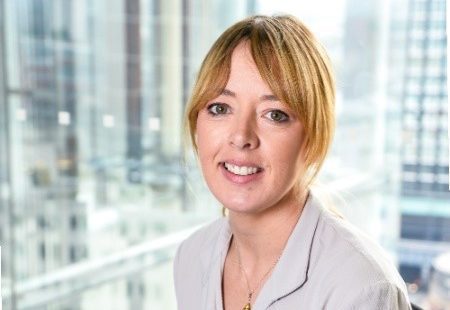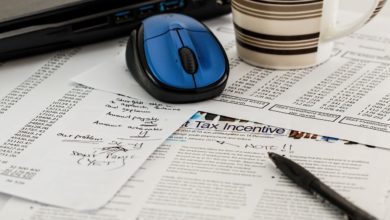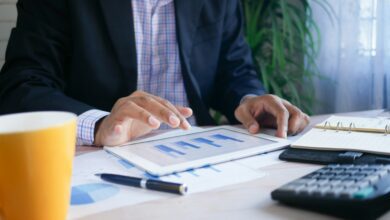Structures and Buildings Allowances still need to be better known
By Carmen Morrison, Senior Capital Allowances Analyst at innovation funding specialist Catax

Structures and Buildings Allowances (SBAs) is one Capital Allowance that often goes unclaimed. It is a relatively new allowance, having only been implemented in late 2018, and some areas of it can be complex.
SBAs were introduced to stimulate investment for the construction of new buildings or improvement works to already existing buildings.
It entitles taxpayers to claim tax relief on expenditure to structural works on commercial property at 3% per annum for 33 and 1/3 years (the relief increased from 2% per annum in April 2020).
Previously, tax relief with regards to construction and improvement works was limited to expenditure on installations such as water, electrics, heating, ventilation, sanitaryware and other plant and machinery or fixtures and fittings.
Yet the biggest portion of expenditure is usually the structural works themselves, making this a welcome tax relief for people investing in commercial property — and also therefore a scheme that needs to be better known.
What are the criteria for SBAs?
As with most tax reliefs, there are certain criteria that need to be met for the expenditure to qualify for the relief. For SBAs these are; entitlement, the commencement date, the qualifying activity and qualifying expenditure.
Entitlement
To claim SBAs, the taxpayer must have a relevant interest in the property in which the structural works have been carried out, either as a freeholder or a leaseholder. However, to be entitled to the relief as a leaseholder, there must be a minimum lease term of 35 years.
Commencement Date
The relief is available provided that the expenditure was incurred and relevant contracts for the works were signed on or after 29th October 2018. This means that SBAs would not be available if the agreements to commence the work were signed before this date, even if no works had started.
The qualifying activity also needs to have commenced before SBAs can be claimed on the expenditure incurred.
Qualifying activity
The qualifying activities for SBAs can be very similar to those claimed for other Capital Allowances. However, expenditure on furnished holiday lettings are excluded from this relief.
Qualifying activities for SBAs include:
-
any trades, professions and vocations;
-
a UK or overseas property business (except for residential and furnished holiday lettings);
-
managing the investments of a company;
-
mining, quarrying, fishing and other land-based trades such as running railways and toll roads.
Qualifying expenditure
Examples of expenditure that qualify for SBAs include walls, floors, ceilings, doors, gates, shutters, stairs, windows, car parks, roads and tunnels. SBAs are also available on expenditure incidental to the structural works being carried out, such as fees for the design work and preparing the site for construction.
SBAs cannot be claimed on any expenditure relating to land or landscaping. They also do not apply to items that qualify for other reliefs, such as expenditure on plant and machinery or fixtures or fittings.
This makes a detailed Capital Allowances analysis on the expenditure still very important for any construction or improvement works projects
Disposal of a property
If the property is sold, unclaimed SBAs can be transferred to the buyer. Depending on the seller and condition of the property, there are different rules on what initial cost SBAs will be claimed on.
If the taxpayer buys a used structure from somebody that is not a developer, the taxpayer can claim the structures and buildings allowance on the same amount that the previous owner was entitled to claim. However, if the property is sold unused from someone that is not a developer, SBAs are restricted to whichever is lower of the price paid for the property and the original construction costs after deducting items the taxpayer cannot claim SBAs on such as plant and machinery, fixtures and fittings and land.
If a taxpayer purchases a property unused from a developer they can claim SBAs on the price they paid once items such as plant and machinery, fixtures and fittings and land have been deducted. However, if the taxpayer buys a used structure from a developer they can claim the structures and buildings allowance on the developer’s construction costs again after deducting items the taxpayer cannot claim SBAs on.
SBAs must be claimed in a chargeable period. If, for any chargeable period, the SBA is not claimed, it is lost and cannot be claimed in any other chargeable period.
Claiming SBAs
To be able to claim SBAs, the taxpayer must have an allowance statement for the structure. If the taxpayer is the first person to use the structure, they must create an allowance statement before they can make a claim.
The allowance statement must include:
• information to identify the structure, such as address and description
• the date of the earliest written contract for construction
• the total qualifying costs
• the date that you started using the structure for a non-residential activity
If the taxpayer buys a used structure, they can only claim SBAs if they get a copy of the allowance statement from the previous owner.
Capital Gains implications
Taxpayers should keep in mind that if they come to dispose of the property, they may have to pay more Capital Gains Tax as any SBAs claimed are to be added to the disposal receipts to calculate the capital gain or loss.
Carmen Morrison is a Senior Capital Allowances Analyst at innovation funding specialist Catax. She can be contacted at carmen.morrison@catax.com









